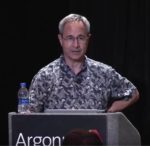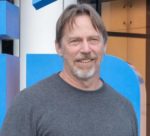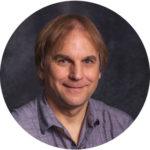[SPONSORED CONTENT] Jay Boisseau, HPC & AI Technology Strategist at Dell Technologies and organizer of the Dell Technologies HPC Community meetings, is one of the big personalities of HPC, someone who brings energy and insight to any gathering he’s a part of. In this insideHPC interview conducted on behalf of Dell, we talk with Boisseau about his career path, including serving as director of the Texas Advanced Computing Center, about big shifts and future trends in HPC and about the phenomenon, where HPC and AI intersect, of data growth rates outpacing Moore’s Law. He also disc uses his strategy for infusing life into the HPC Community meetings in an era of “Zoom fatigue,” including drawing inspiration from The Art of Gathering by Priya Parker, who, as Boisseau points out, probably never dreamed of the Zoom era.
Dell Technologies Interview: Dell’s Jay Boisseau on Data Growth Outpacing Moore’s Law, the HPC-AI Divide-Convergence and Beating Zoom Fatigue
IBM and Samsung Unveil ‘Semiconductor Breakthrough That Defies Conventional Design’
Today, IBM and Samsung Electronics jointly announced what they said is a breakthrough in semiconductor design utilizing a new transistor architecture that allows more transistors to be packed in an IC chip. The key: the transistors stand up rather than lie down, thus taking up less space and offering “a pathway to the continuation of […]
Video: Ayar Labs pushes Moore’s Law through Optical I/O technology
In this video, Mark Wade from Ayar Labs explains how the company’s optical I/O solution will address the critical computing challenges of efficiency, density, and distance for next-gen system architectures. “Our patented approach uses industry standard cost-effective silicon processing techniques to develop high speed, high density, low power optical based interconnect “chiplets” and multi-wavelength lasers to replace traditional electrical based I/O.”
Compendium of articles published on Numerical Algorithms for HPC Science
The Royal Society Publishing has recently released a special compendium of articles based on a recent scientific discussion meeting with HPC Industry thought leaders. “This issue contains contributions from those who develop and implement numerical algorithms and software libraries – numerical analysts, computer scientists, and high-performance computing researchers – with those who use them in some of today’s most challenging applications.”
Video: The Parallel Computing Revolution Is Only Half Over
In this video from ATPESC 2019, Rob Schreiber from Cerebras Systems looks back at historical computing advancements, Moore’s Law, and what happens next. “A recent report by OpenAI showed that, between 2012 and 2018, the compute used to train the largest models increased by 300,000X. In other words, AI computing is growing 25,000X faster than Moore’s law at its peak. To meet the growing computational requirements of AI, Cerebras has designed and manufactured the largest chip ever built.”
John Shalf from LBNL on Computing Challenges Beyond Moore’s Law
In this special guest feature from Scientific Computing World, Robert Roe interviews John Shalf from LBNL on the development of digital computing in the post Moore’s law era. “In his keynote speech at the ISC conference in Frankfurt, Shalf described the lab-wide project at Berkeley and the DOE’s efforts to overcome these challenges through the development acceleration of the design of new computing technologies.”
Video: The Challenge of Heterogeneous Compute & Memory Systems
Mike Ignatowski from AMD gave this talk at the Rice Oil & Gas conference. “We have reached the point where further improvements in CMOS technology and CPU architecture are producing diminishing benefits at increasing costs. Fortunately, there is a great deal of room for improvement with specialized processing, including GPUs and other emerging accelerators. In addition, there are exciting new developments in memory technology and architecture coming down the development pipeline.”













